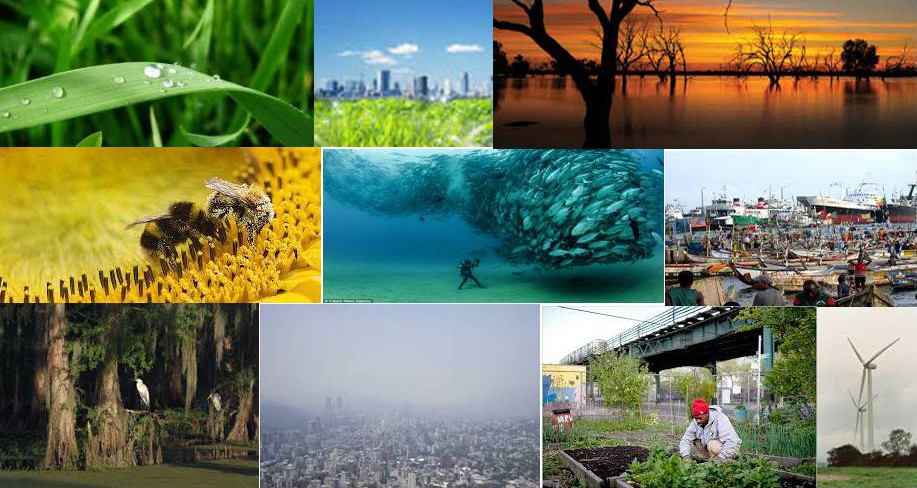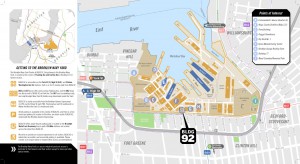Brooklyn Waterfront Research Center at City tech
Author Archives: Sean MacDonald
Readings for Wed. 2/24 are posted
Please see posted links to readings for 2/24; Read articles, bring to class and be prepared for discussion.
Post your reflections, photos, of Sustainable Industries tour
Map and directions to Brooklyn Navy Yard
- Itinerary: Tour Wed. Feb. 17, 12 – 1:30PM
- 12pm-1:30pm – Brooklyn Navy Yard Sustainable Architecture & Industry Tour
- 1:30pm-2pm – Independent exploration of the exhibits at BLDG 92
- Meeting Place: The Brooklyn Navy Yard Center at BLDG 92, located at the corner of Carlton Ave & Flushing Ave, Brooklyn, 11205 – see below for directions.
- IMPORTANT: If you are using GPS or an online mapping service to find BLDG 92, enter “Flushing Ave and Carlton Ave, Brooklyn, NY” and not the street address, as there is only one address for the entire 300-acre Yard. Do not enter “63 Flushing Ave” or just “Brooklyn Navy Yard,” as you will end up in the wrong location.
- Do not attempt to enter the Brooklyn Navy Yard through any of the other security entrances, as you will be turned away. There is no public parking inside the gates of the Navy Yard, with the exception of individuals with a handicapped parking sticker.
- If you plan on taking the subway, the closest stops are York Street (F) and High St (A/C). Alternative transportation options, as well as driving, biking, or ferry directions are here.
- Driving Directions: The Brooklyn Navy Yard is accessible from the Brooklyn-Queens Expressway (I-278), either via the exits for Tillary St (exit 29B), Flushing Ave (exit 30 eastbound), or Wythe Ave/Kent Ave (exit 31 westbound).
- Street parking is available adjacent to BLDG 92, or there is a free municipal parking lot one block south of BLDG 92 along Park Ave, underneath the Brooklyn-Queens Expressway.
- If you get turned around for any reason, please call Turnstile Tours at (347) 903-8687.
- Bring a camera. There are great views all over the Yard, but please note that photographs taken on this tour may only be used for non-commercial or personal purposes. Using photographs for commercial purposes without acquiring permission from theBrooklyn Navy YardDevelopment Corporation is strictly prohibited. Please also note that photography of Steiner Studios, the power plant, and the interiors of tenant buildings (without permission), is not allowed.
- Dress comfortably and appropriately for the weather. Wear comfortable shoes and make sure to dress appropriately for the weather, as we will be getting off the bus at several points during the tour. We give our tours rain or shine, and there will be no refunds due to weather conditions unless Turnstile Tours cancels the tour out of concern for safety. In this case, we would call you no later than 9am on the day of the tour to reschedule.
- Special needs & accessibility. We strive to provide an inclusive and welcoming experience on all of our tours. If you have any special needs, please don’t hesitate to email us at info@turnstiletours.com so that we can make appropriate accommodations.
Weekly readings
Reading assignment for Wednesday Feb. 10
Read the following articles, 1. Economic Doctrines and Approaches to Climate Change Policy by Atkinson and Hackler, (pgs. 1 – 9; 15 – 16; 22 – 23 and 33 – 36) and 2. Why Emissions Trading is More Effective than an Carbon Tax by the International Emissions Trading Association and comment/answer any two of the following questions by 11:59 pm Feb. 8.
Atkinson-etal-2010-econ-climate-change_theories
Why Emissions Trading is More Effective Than a Carbon Tax_session1
In pages 1 – 9, the authors discuss their views of how Neoclassical, Neo-Keynesian and Innovation Economics would design economic policies to address the issue of climate change. Discuss your answers to any two of the following questions:
1. According to Atkinson and Hackler, what do neoclassical economists view as the most effective policy in addressing the challenges of climate change?
2. What assumptions does neoclassical economics make about human behavior? Are these assumptions realistic? Explain
3. According to Atkinson and Hackler, what are two or three arguments made by neo-Keynesian economics? What policy does neo-Keynesian economics see as most effective in addressing the challenges of climate change? Describe
4. What are the principal problems the authors have with both neoclassical and neo-Keynesian economic proposals for resolving climate change? Clearly explain.
5. The authors discuss their theory of “Innovation Economics.” What reasons do authors cite as to why Innovation Economics offers a more effective framework for addressing the economic realities of the 21st century.
6. Describe the policy advocated by the IETA and why they believe this policy to be effective.




